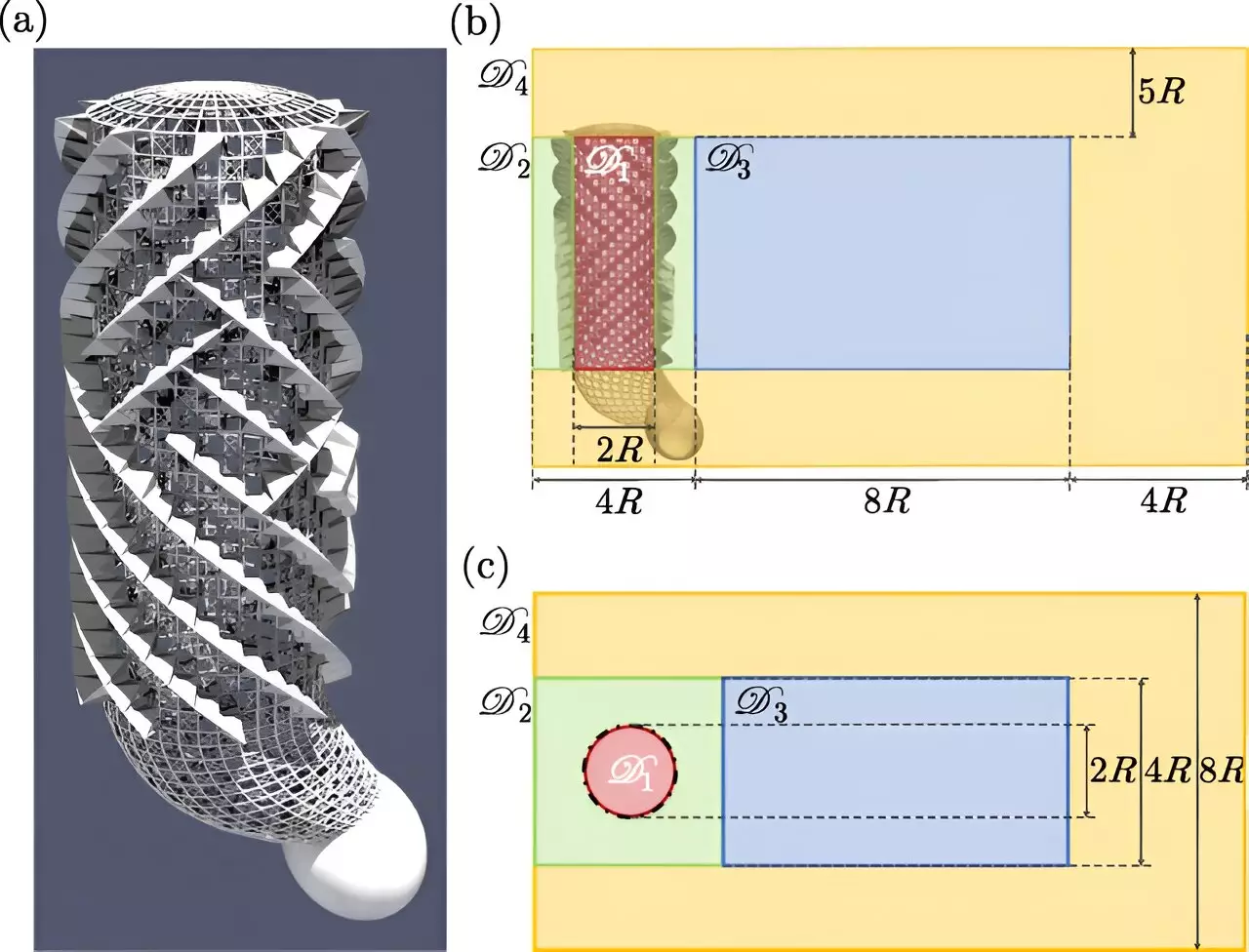The Venus flower basket sponge, known for its delicate glass-like lattice outer skeleton, has long been a subject of fascination for researchers due to its ability to thrive in the harsh conditions of the deep sea. A recent study conducted by an international research team reveals a new engineering feat exhibited by this ancient animal – its ability to filter feed using only the faint ambient currents of the ocean depths, without the need for pumping. This discovery has significant implications for the field of engineering, with applications in chemical reactors, air purification systems, heat exchangers, hydraulic systems, and aerodynamic surfaces.
The study, published in Physical Review Letters and co-led by the University of Rome Tor Vergata and NYU Tandon School of Engineering, highlights how the skeletal structure of the Venus flower basket sponge diverts slow deep-sea currents to flow upwards into its central body cavity. This unique mechanism allows the sponge to feed on plankton and marine detritus filtered from the water. Through high-resolution computer simulations, researchers found that the sponge’s spiral, ridged outer surface functions like a spiral staircase, enabling it to passively draw water upwards without the need for active pumping.
The research team concluded that the Venus flower basket sponge’s ability to filter feed passively only works at very slow current speeds, typically just centimeters per second in its habitat. From an engineering perspective, the sponge’s skeletal system exhibits remarkable adaptations to its environment, both structurally and in terms of fluid dynamics performance. The study’s first author, Giacomo Falcucci of Tor Vergata University of Rome and Harvard University, emphasized the elegant solution the sponge has developed for maximizing nutrient supply through passive mechanisms.
To conduct their research, the team utilized the powerful Leonardo supercomputer at CINECA, a supercomputing center in Italy, to create a highly realistic 3D replica of the Venus flower basket sponge. This “digital twin” enabled detailed simulations of water flow around and inside the sponge’s complex helical ridge structure. The researchers were able to explore a wide range of water flow speeds and conditions, providing valuable biomimetic engineering insights that could inform the design of more efficient reactors and ventilation systems.
The insights gained from studying the Venus flower basket sponge could have practical applications in various engineering fields. By optimizing flow patterns inside reactors and minimizing drag, similar ridged, porous surfaces could enhance air filtration and ventilation systems in buildings. The asymmetric, helical ridges of the sponge’s structure may also inspire the design of low-drag hulls and fuselages that maintain streamline characteristics while promoting efficient air flows.
Overall, the research on the engineering feat of the Venus flower basket sponge sheds light on the remarkable adaptations of this ancient creature and offers valuable lessons for engineers seeking to improve the efficiency and performance of various systems through biomimicry.


Leave a Reply